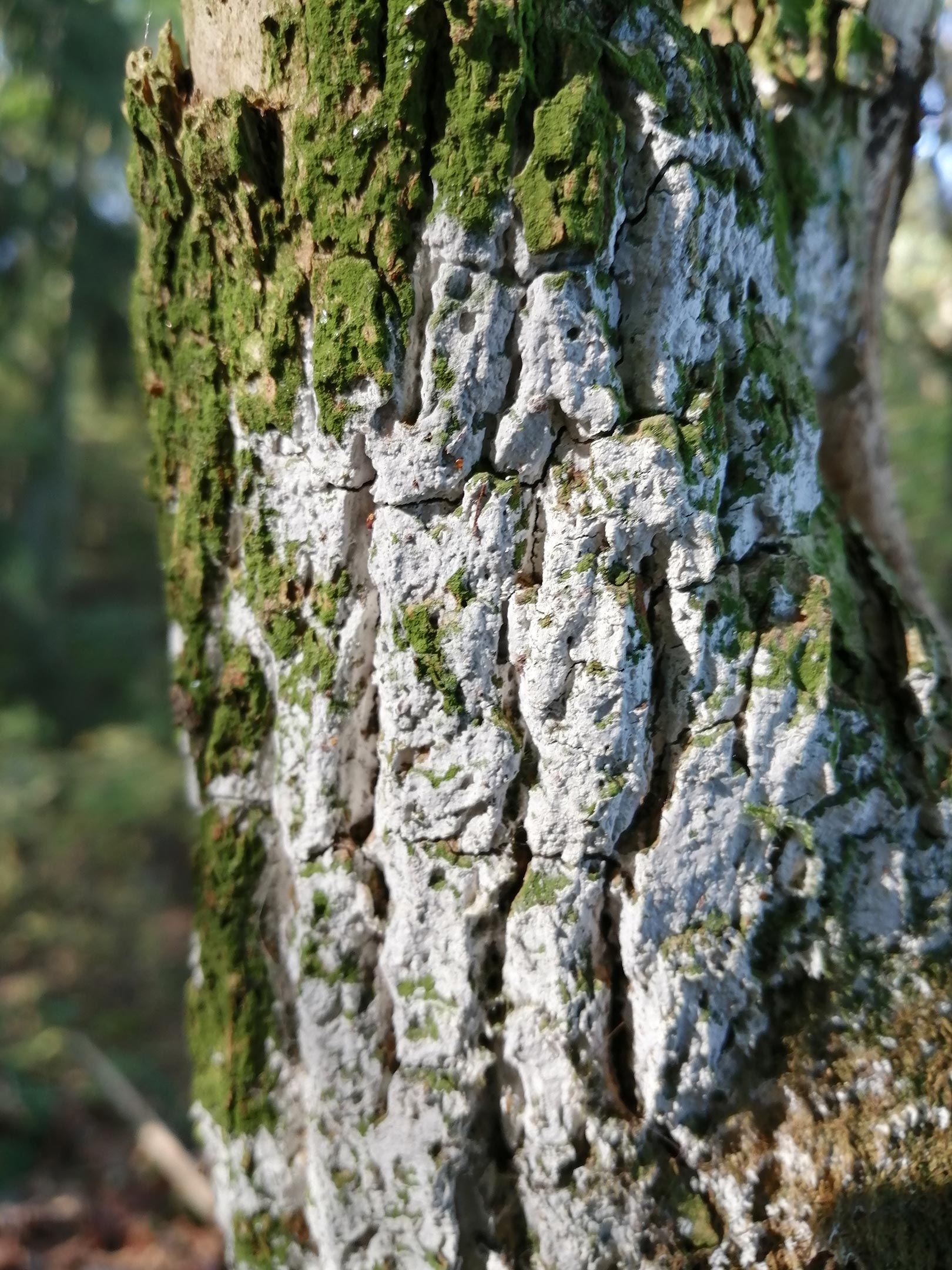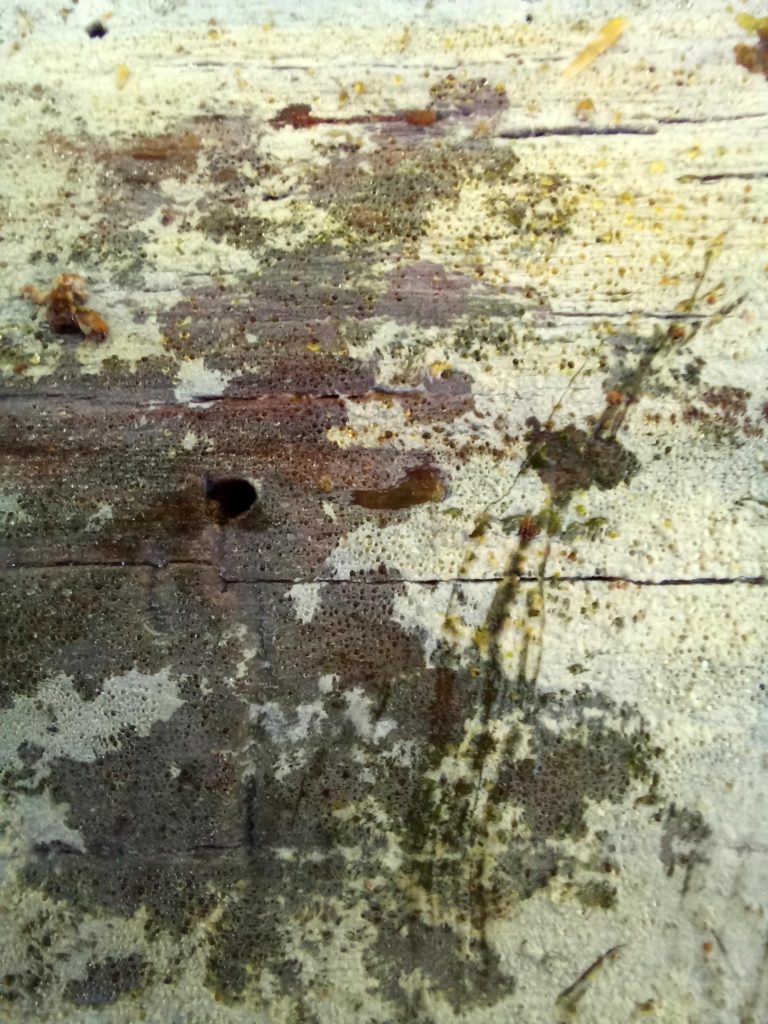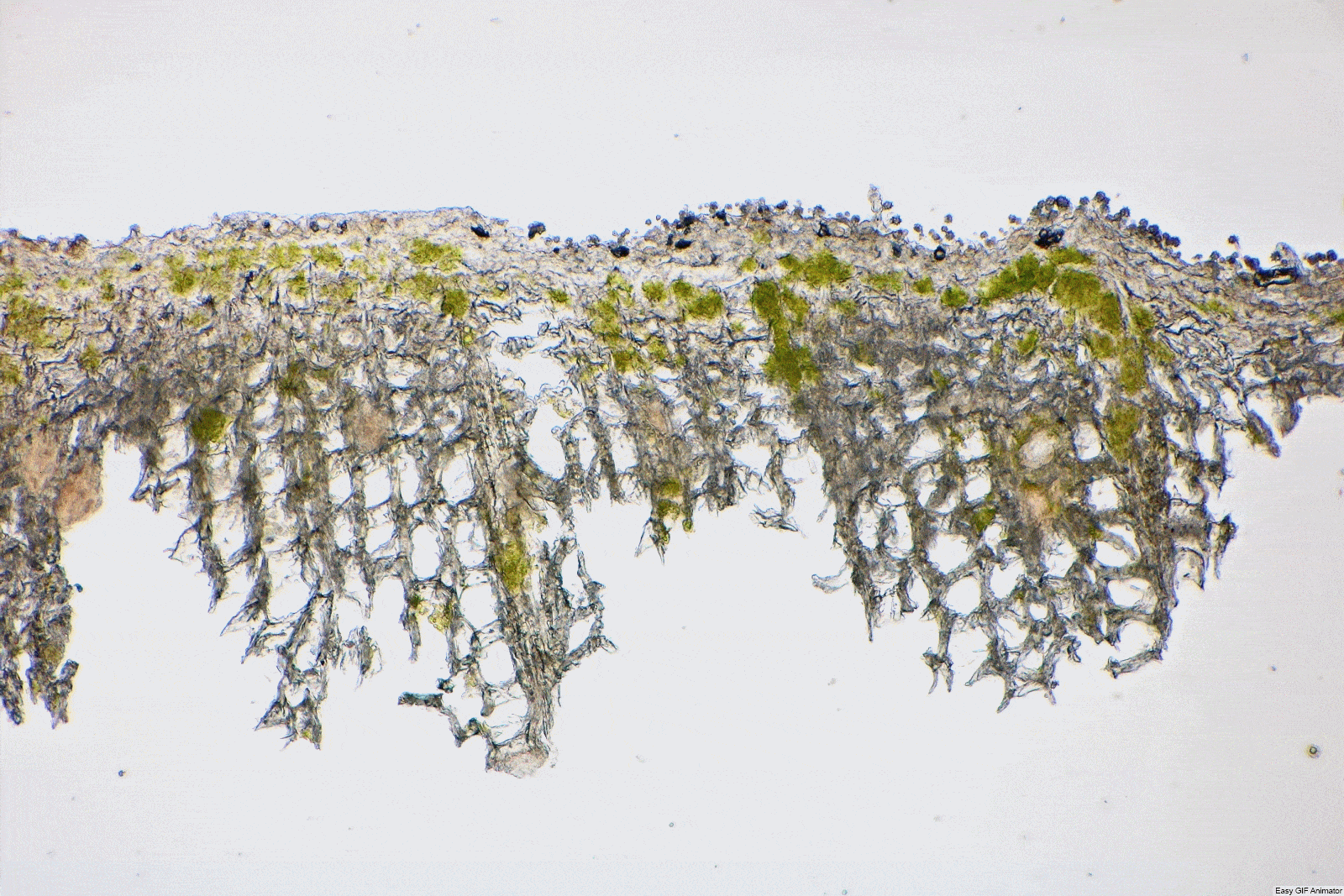
Alcobioses are common in urban areas, too. Lyomyces sambuci, pictured here, is abundant on elder bark. Credit: Institute of Botany, Czech Academy of Sciences
Researchers from the Institute of Botany, Czech Academy of Sciences, described the symbiotic relationship between fungi and algae which science has largely overlooked until now. The coexistence of algae and corticioid basidiomycetes, which are common in temperate forests, has been given a new name: alcobiosis.
Jan Vondrák of the Department of Taxonomy, Institute of Botany, and the first author of the study says “Years ago, during field trips, we were repeatedly puzzled to find a layer of green algae where some of the fungal coatings on wood or bark (so-called corticioid fungi) are disturbed. We discovered that this is a close symbiosis of fungi and algae, not a lichen, though, because the fungus does not depend on its alga for nourishment.“
Researchers introduced a new term for this type of coexistence: alcobiosis, formed by letters from the three key words: algae, corticioid fungi and symbiosis.

Once the fungus coating is disturbed, a green layer of algae appears. Credit: Institute of Botany, Czech Academy of Sciences
In the course of several years, the team of researchers gathered a large number of samples and performed DNA sequencing of the algal and fungal partners. They discovered that the symbiosis is very common and occurs in a great many corticioid fungi across the class of agaricomycetes. Individual fungal species are usualy faithful to a specific algal species from a range of algae described in various alcobises.
Ensuing physiological measurements of algal activity in alcobioses confirmed that the algae are alive, active and engage heavily in photosynthesis, which proves that they prosper inside fungal tissue. Alcobioses bear a striking resemblance to lichens, but differ from them in that the fungal partner does not depend on its alga for nourishment.

Cross-section of alcobiosis in a light microscope (where the algal chlorophyll is green) and a fluorescence microscope (where the chlorophyll is red due to autoflorescence). Credit: Institute of Botany, Czech Academy of Sciences
“And so the main unknown still is in what way this symbiosis is beneficial for each of the partners. However, our discovery also brings many questions related to geographic, ecological and taxonomic parameters of the symbiosis, such as whether alcobioses diversity increases from polar to tropical regions,“ Jan Vondrák comments on the team´s discovery and adds: “This coexistence has been mentioned in articles before. Most often, though, these were just fragmentary comments that such and such species of corticioid fungus is often found together with algae. We were the first to graps alcobioses as a widespread phenomenon which includes a large number of algae and fungi.“
During their research, the authors also discovered that the spread of alcobioses is aided by small gastropods who often feed on corticioid fungi. Their excrements contain viable cells of algae and fungi who give rise to new alcobiotic coating shortly after. This type of reproduction is similar to lichen “isidia“ (i.e., specific lichen thallus structures used in vegetative reproduction).
Scientists at the Institute of Botany have described a symbiotic relationship that is very common in Europe, but which has so far escaped attention, despite the fact that many generations of naturalists have come and gone in Europe. In this way a new space has opened for the further study of alcobioses from various points of view by both professional biologists and biology enthusiasts. For alcobioses are clearly visible to the naked eye and it is easy to distinguish them from similar fungi which do not form this kind of relationship.
Reference: “Alcobiosis, an algal-fungal association on the threshold of lichenisation” by Jan Vondrák, Stanislav Svoboda, Lucie Zíbarová, Lenka Štenclová, Jan Mareš, Václav Pouska, Jiří Košnar and Jiří Kubásek, 28 February 2023, Scientific Reports.
DOI: 10.1038/s41598-023-29384-4
"type" - Google News
February 28, 2023 at 05:00PM
https://ift.tt/4AiTXS0
New Type of Symbiotic Relationship Discovered Between Algae and Fungi - SciTechDaily
"type" - Google News
https://ift.tt/yGz0dIV
https://ift.tt/tREJALp
Bagikan Berita Ini














0 Response to "New Type of Symbiotic Relationship Discovered Between Algae and Fungi - SciTechDaily"
Post a Comment